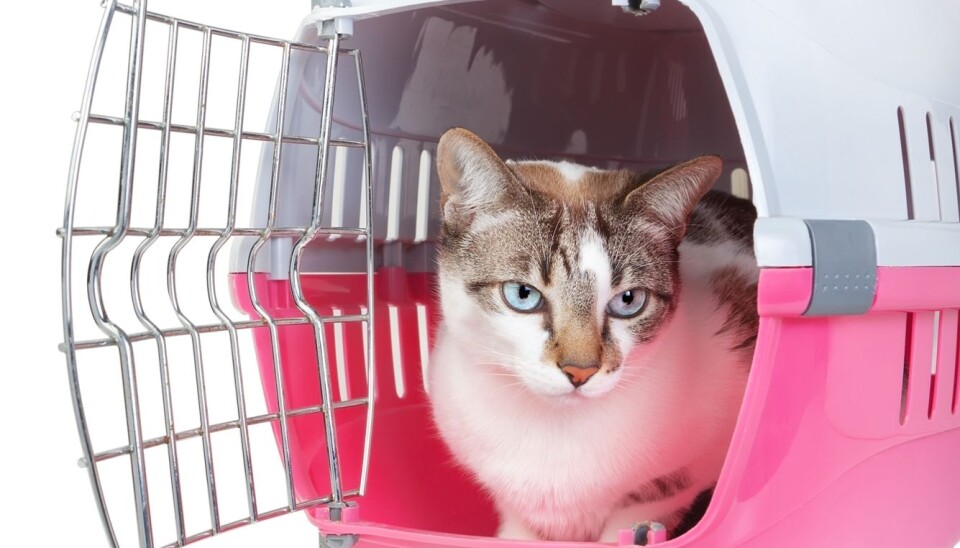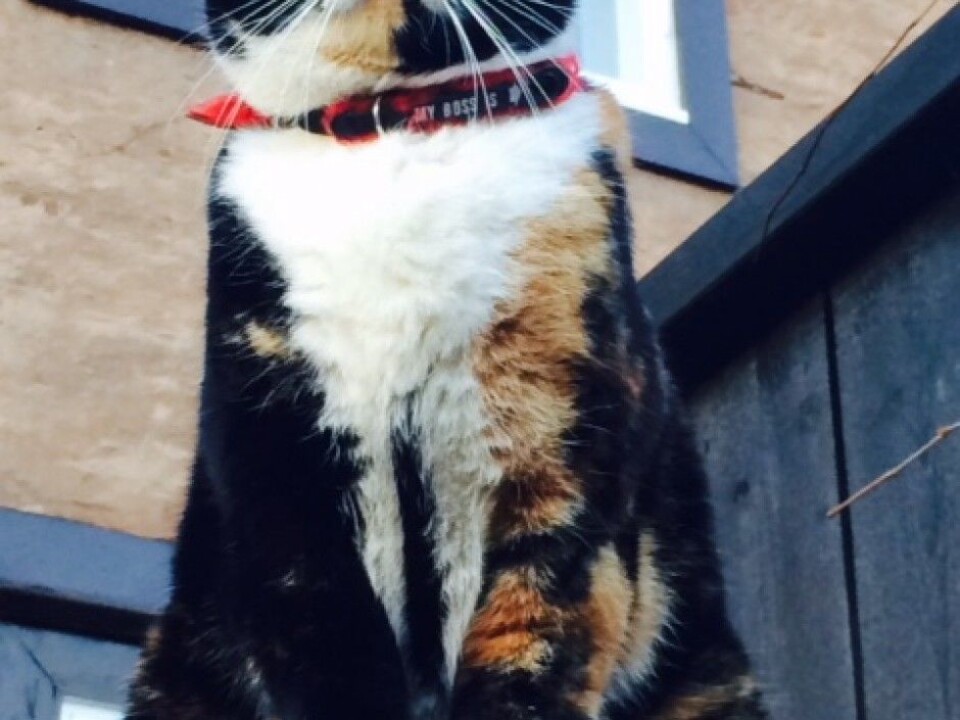
What do we do with our cats when we leave on holiday?
How long a vacation can I take away from my cat? Can I bring it along to my summer destination?
Denne artikkelen er over ti år gammel og kan inneholde utdatert informasjon.
A new Spanish meta-study finds that although cats are independent they are vulnerable to changes in their milieu. They can grow upon us, so what do we do with the cat?
It can get scared and run away if we take it along to our holiday destination, such as our cottage. How long can a cat manage home alone? How often should a friend or neighbour stop by?
We have asked cat expert Bjarne Braastad, a professor of ethology at the Norwegian University of Life Sciences (NMBU) and author of a book on cat behaviour and welfare. Ethologists are experts on animal behaviour, particularly under natural conditions.
“The cat can become scared, insecure or frustrated if forced to live in a new environment. However, you mustn’t go away for several days and think the cat will get by on its own without supervision,” says Braastad.
Happiest at home
What’s best for the cat when the owner is on vacation?

“Many feel comfortable at a cat hostel but the best thing for cats as a rule is to live at home. That is especially true during summer vacation if the cat can go in and out through a cat door,” says Braastad.
The cat door or flap should have a magnetic lock or chip control if other cats live nearby. And the cat must learn to use it before you leave.
The cat should normally have reached adulthood before you leave it.
The cat needs to gradually gain experience at being alone and should have supervision at least once a day even if it likes being on its own.
Helpful neighbour

Many wonder whether they can stay away a week if they put out a lot of food?
“No, this is too long. Most cats need more frequent supervision, preferably daily, to ensure they get enough food and drink. Daily visits are particularly important if you don’t have a cat flap,” says Braastad.
The only cats which can be expected to really get by on their own are typical farm cats. They live mainly outdoors and are only occasionally given food,” says Braastad.
Cats may have become tamed by being petted and given food, shows a previous study.
You need to arrange for an acquaintance or neighbour who can visit your pet if you travel away for several days or more.

In this case it is best if the cat can get familiar with the person beforehand. Get the neighbour to come over while you are home.
Braastad stresses that neighbours or friends should not only give food and water to the cat, but also check whether your kitty is alright, pet it and spend some time providing social contact.
They can play a bit with the cat or sit down and read the paper or watch TV.
How to vacation with your cat
Can I take my cat to my cabin?
“It’s impossible to guarantee that a cat at a cabin doesn’t get lost, or tries to run home again. But I have good experiences with cats on cabin trips,” says Braastad.
Ensure that it is ID marked with a microchip and perhaps an ear tattoo before you leave, in case it does run off.
“If you take the cat to your cabin it has to adapt to the vacation spot. If this is the first time it has been there or at your friends’ place, you should keep it indoors first to get it used to the house or cabin. Given that the conditions outdoors are safe the cat can be let out after a couple of days.
When you let the cat go free outdoors you need to be together with it until it feels safe there. To keep them from roaming too far off you should have it on a cat leash to begin with. First take a few walks around the cabin, and then further off. It’s also a good idea to familiarise the cat with a cat leash indoors first.
Cats dislike moving surfaces
Cats generally don’t like being in spots where they are standing or laying on something that is jiggling around, which is why cats generally don’t like to ride in cars. Some cats can handle boats, but they need to be accustomed to it since they were kittens and have their own litterbox that they are used to aboard the boat.
Cats on boats can panic and jump overboard, especially if you are close to the shore.
What about a caravan (trailer)?
Some people take their cats on a trip in a caravan or a camper.
“This works too and the trick is to get the cat accustomed to such vacations from early in life, as kittens. But the cat should not go alone round a campground. Outdoors it needs to be on a leash or kept in a large cat cage.
Before putting the cat in the car you should place it in the cat cage so it gets used to it. Car trips work best if the cat has started off on them as a kitten.
Many good cat hostels
Should I leave the cat at a hostel?
“Yes, many cat hostels or cat hotels are run very nicely. But some are not so good so you need to see the conditions at several before making up your mind. Choose one where the cat can walk around freely, not just sit in a cage,” suggests Braastad.
Some places keep cats in cages the whole time, while others allow them outside their cages for a while every day into a big room or outdoor pen or corral.
Others let the cat decide freely if they want to lay in their cage, stroll around on the floor or go outdoors into a cat corral.
“I like the latter best and the cats seem to quickly accustom themselves to this environment,” says the professor.
Start with a weekend stay
If you opt for a cat hostel you should leave it there for a couple of days the first time. Braastad recommends that you increase the stays gradually so your cat gets used to it.
Don’t the cats fight there?
“Fights rarely break out between the cats because they are all on neutral grounds and this is no one’s private territory, The cats meet on equal footing – or paws.”
He explains that the few cats that dislike being with others or who bully and attack other cats will be placed by personnel in their own cages or in another, smaller corral.
Travelling abroad
If you plan to take the cat to another country you could already be too late. In Norway cats have to undergo a vaccination regime which takes six months. One disease it needs to be vaccinated against is rabies. Before you come home the cat also has to be given a tapeworm cure.
Braastad emphasises that everyone who has responsibility for animals needs to have the necessary competence to care for the animal and avoid welfare problems.
———————————————
Read this article in Norwegian at forskning.no
Translated by: Glenn Ostling



































